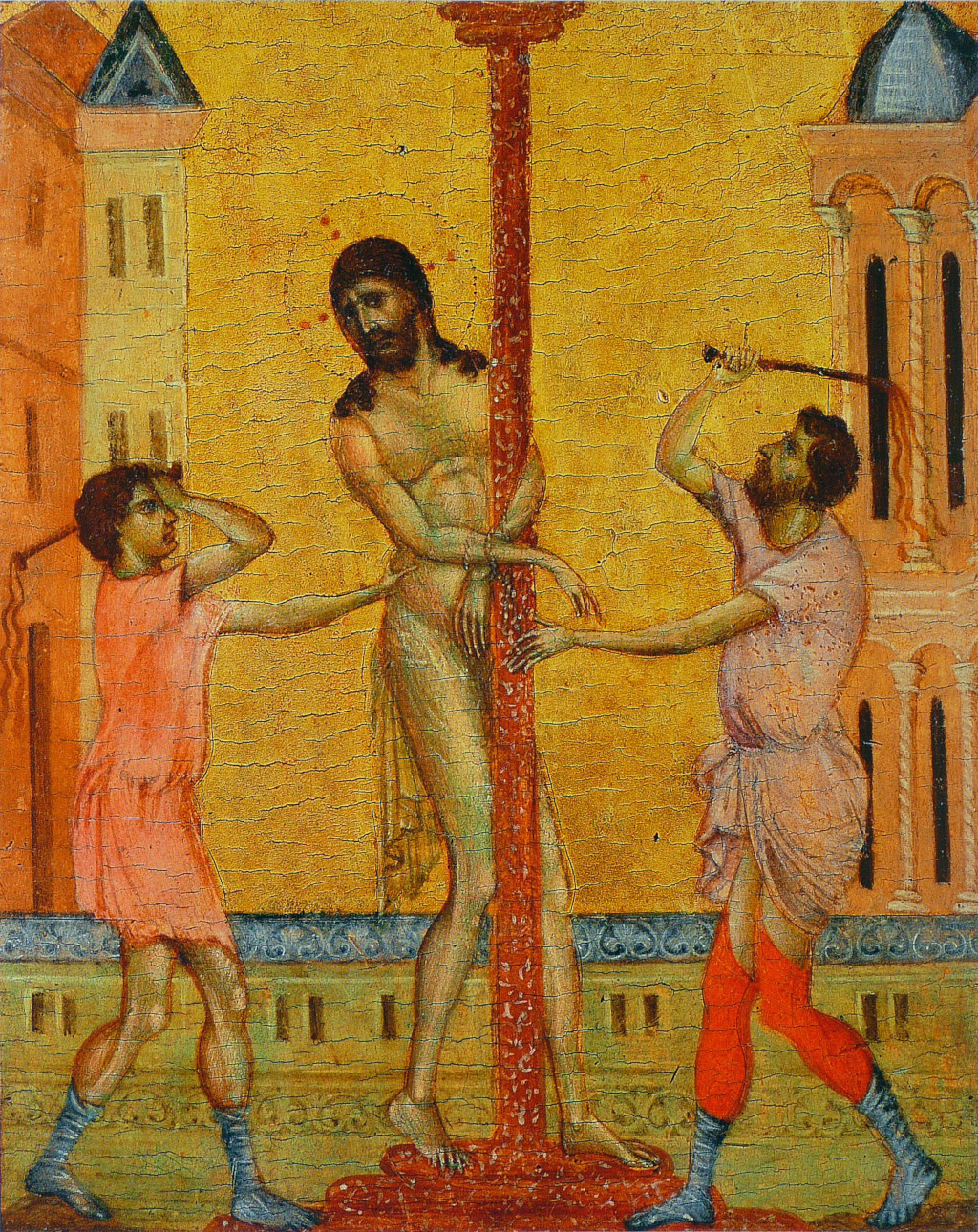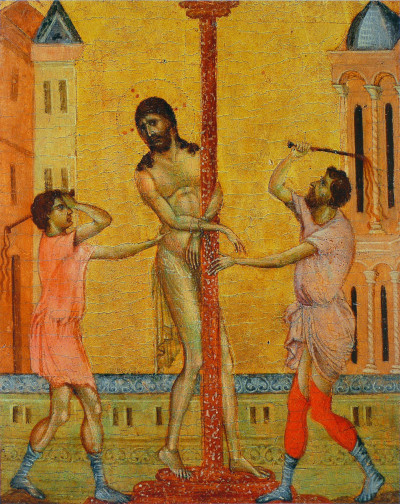The Flagellation of Christ is an artwork by Cimabue which is dated to around 1280.
Introduction
Cimabue's oeuvre is dominated by religious themes, with the suffering of Christ appearing many times within that, such as with his two crucifixes. The artist would have been approaching his early forties by the time of The Flagellation of Christ, and had already built an enviable reputation as a leading Italian painter.
Description
The painting captures Christ's suffering, as two men beat him with sticks. His arms are tied around a vertical structure which lines the length of the painting. He is unable to move, and watches on in horror as his punishment continues. His is dressed only in a small cloth around his waist, underlining his vulnerability.
Christ is shown as slim, with elements of his muscles showing through. This does not give the impression of strength, though, and rather leans more towards weakness and being under weight, if anything. We saw the same in Cimabue's earlier Crucifix.
The perspective is noticeably flattened, with little signs of what the likes of Giotto would later contribute to European art. The only way in which our brains can add depth to the composition is by making assumptions from what we might expect, where buildings behind the figures are intended to be way off in the distance - but there is little use of shading or architectural perspective to inforce this within the painting.
The ground around Christ and the two brutal figures follows the same disregard for perspective. Some tiled elements line across the horizontal, but everything retains the flat nature of Middle Age art, laying the way for the Renaissance to progress things in the years that followed.
Original Altarpiece
This panel was not intended to be displayed independently, and was actually a single part of a diptych which has since been separated into its individual components. Experts have been able to work out where the Flagellation would have fitted into the original layout, likely lying in the lower right corner of a two-sided, eight panel display.
Details and Location
The painting was produced using tempera on a poplar wooden panel. Cimabue would then apply gold leaf paint in addition to provide vibrancy and contrast, and this was a popular method in both the 13th and 14th century.
Cimabue's Flagellation of Christ can today be found in the Frick Collection, which remains one of the finest permanent displays of European art anywhere in New York. The collection has grown over a period of many years, and has managed to retain its impressive reputation as a significant art institution.
The item is relatively small, measuring 24.7 cm × 20 cm (9.7 in × 7.9 in), which actually makes it ideal for a modern art gallery or museum, when many of the artist's other works would have been logistically difficult to include within a permanent display, sometimes reaching over four metres in height and width.
Conclusion
There are very few items left remaining today from Cimabue's career, making each of them highly significant. The Flagellation's appearance in the prominent Frick Collection also ensures that this piece continues to receive considerable attention. The piece is small in physical size, but very important in continuing our understanding of the artist's technique which evolved over the period of several decades.
Large Image
 The Flagellation of Christ in Detail by Cimabue
The Flagellation of Christ in Detail by Cimabue




